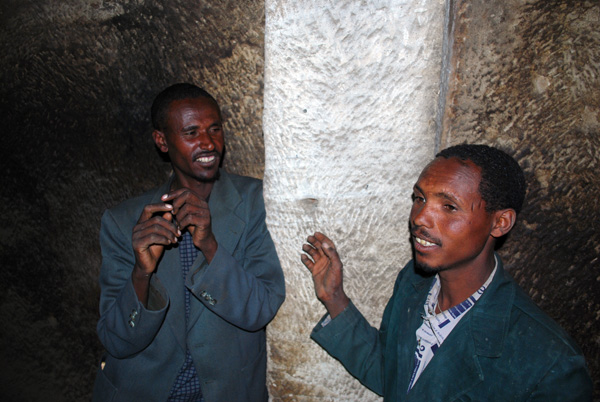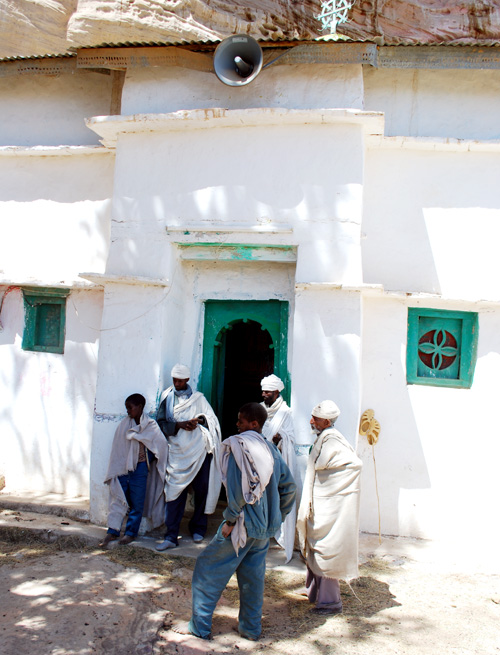Responsible persons at the church of Debre
Selam Mika’el
ABBA EDUL TESFAY is the vicar at Debre Selam Mika’el, to the left in the photo, here involved in a charming conversation with one of his deacons. The team, which did an investigation of this church, had the pleasure of having several rewarding appointments with him and his fellow priests and deacons during this time. He and his staff on location are the most important collaborators for us in SCECH. Some of them, as the above mentioned, have become personal friends for those on our conservation team who had the privilege to make the preliminary examination in Debre Selam Mika’el during November 8-15 2009. During long and rewarding meetings with the church council where the team: the project manager Lars Gerdmar and Carmen Deas, both painting restorers and civil engineer Karl-Gunnar Olsson, discussed different aspects of a planned conservation. The way to the confounding dialogue which was quite soon established was paved by staff from Agency for Culture and Tourism in the National State of Tigrai (ATC), situated in Mekele, and then not least our interpreter and contact person from this institution, Ato Mulu Teklay Baryatsion. The persons tied to this building and innumerable people around, living in this area, who use this place both as a home for religious purposes and as a place for social meetings and feasts, are longing for a rearmament of this, the most important public building in the district. They are also suffering from the awareness that if nothing is done about the paintings in their church they will face the same fate as in Mikael Imba – just a short distance from here – also that one of the precious medieval churches in this area, which have lost all of its murals. Debre Selam Mika’el is the church chosen to become the first cultural heritage in Ethiopia to be restored by the SCECH
A priority for the SCECH is the people at location (see some of them in the photo above), i.e. the priests and deacons, all the children who are always around and the farmers’ families gathered together around the beautiful temple of theirs. It is with these wonderful people in focus – who are part of the living, age-old and unique Ethiopian cultural legacy – that we plan our pilot project, as well as the education of our first trainees. We hope that these people will take the future responsibility of this indispensable Ethiopian Cultural Heritage, an important part of African art and history as well as World Heritage. In the long run it is they, in agreement with responsible people on location, who after due practice and higher education, together with other educated restorers, will be the Ethiopian profession taking care of this and other cultural heritage in Ethiopia. Learn more: Maps of Ethiopia and this area, Conservation, Education and Ato Mulu Teklay Baryatsion, ACT


Lämna ett svar
Du måste vara inloggad för att publicera en kommentar.